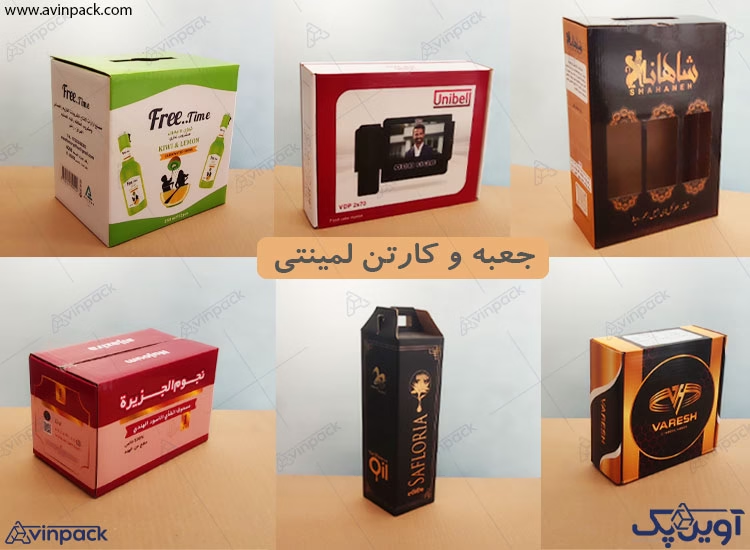
To address the query "What is the difference between laminated cardboard and flexo cardboard?" in detail, let’s break down each term and then compare them comprehensively.
What is Laminated Cardboard?
Laminated cardboard refers to cardboard that has undergone a lamination process, where an additional layer is applied to its surface. This layer is typically a thin plastic film, though it can sometimes involve other materials like foil or specialized coatings, depending on the intended use. The lamination process involves bonding this layer to the cardboard, often using heat, pressure, or adhesives.
Key Characteristics of Laminated Cardboard:
- Purpose: The primary goal of lamination is to enhance the cardboard’s properties. This can include:
- Protection: It makes the cardboard more resistant to moisture, grease, and physical wear, safeguarding the contents of the packaging.
- Durability: The added layer increases the cardboard’s strength and longevity.
- Aesthetics: Lamination can provide a glossy, matte, or satin finish, improving the visual appeal and making the surface smoother for high-quality printing or branding.
- Applications: Laminated cardboard is commonly used in packaging where durability or a premium look is essential, such as:
- High-end consumer goods (e.g., electronics, cosmetics).
- Food packaging requiring moisture or grease resistance (e.g., frozen or perishable items).
- Retail displays or point-of-sale materials.
Example: Think of a glossy cereal box or a luxury product package that feels sturdy and resists water splashes—that’s likely laminated cardboard.
What is Flexo Cardboard?
Flexo cardboard, while not a universally standardized term, most logically refers to cardboard that has been printed using flexography, a widely used printing technique in the packaging industry. Flexography, often shortened to "flexo," involves the use of flexible rubber or photopolymer plates to transfer ink onto a substrate, such as cardboard. The term "flexo cardboard" likely highlights the printing process applied to the cardboard rather than a distinct type of cardboard itself.
Key Characteristics of Flexo Cardboard:
- Purpose: The focus here is on applying designs, text, or images to the cardboard surface. Flexography serves:
- Branding: Adding logos, product names, or decorative elements.
- Information: Printing usage instructions, nutritional facts, or barcodes.
- Efficiency: It’s ideal for high-volume production runs due to its speed and cost-effectiveness.
- Process: Flexography uses fast-drying inks and can print on a variety of surfaces, including the rough texture of corrugated cardboard. It’s versatile and adaptable to different cardboard types, whether coated or uncoated.
- Applications: Flexo cardboard is prevalent in:
- Shipping boxes (e.g., corrugated boxes with printed logos or shipping details).
- Retail packaging (e.g., beverage cartons or snack boxes).
- Any cardboard packaging requiring clear, durable printing.
Example: Picture a brown shipping box with a company logo and address printed on it, or a bulk pack of canned goods with product details—that’s typically flexo cardboard.
Key Differences Between laminate carton boxes and Flexo Cardboard
Now that we’ve defined each term, let’s explore their differences in detail across several dimensions:
- Definition and Process:
- Laminated Cardboard: Involves a structural modification where a protective or enhancing layer (e.g., plastic film) is bonded to the cardboard surface. This is a surface treatment process applied after the cardboard is manufactured.
- Flexo Cardboard: Refers to cardboard that has been printed using the flexographic method. This is a printing process focused on applying ink to the cardboard, not altering its physical structure.
- Purpose:
- Laminated Cardboard: Aims to improve the cardboard’s physical properties—protection against environmental factors (moisture, grease) and enhancement of appearance (glossy or premium finish).
- Flexo Cardboard: Aims to decorate or inform by adding printed content, such as designs, text, or branding, without necessarily changing the cardboard’s inherent protective qualities.
- Material Impact:
- Laminated Cardboard: The lamination adds a tangible layer, altering the cardboard’s thickness, weight, and surface texture. For instance, it might feel slick or shiny and resist water droplets.
- Flexo Cardboard: The printing process adds ink to the surface but doesn’t significantly change the cardboard’s physical structure or thickness, unless a specific coating is applied to aid printing (which isn’t inherent to flexo).
- Applications:
- Laminated Cardboard: Used where durability or a high-quality finish is critical, often in premium or protective packaging.
- Flexo Cardboard: Used where printed information or branding is needed, common in everyday packaging like shipping boxes or mass-produced consumer goods.
- Overlap and Context:
- In practice, these processes aren’t mutually exclusive. Cardboard can be both laminated and printed with flexography. For example, a laminated cardboard box might have a glossy protective layer and also feature flexo-printed logos or text. However, when distinguishing them:
- "Laminated cardboard" emphasizes the lamination feature.
- "Flexo cardboard" highlights the flexographic printing aspect.
- In practice, these processes aren’t mutually exclusive. Cardboard can be both laminated and printed with flexography. For example, a laminated cardboard box might have a glossy protective layer and also feature flexo-printed logos or text. However, when distinguishing them:
Detailed Comparison in Packaging Context
To illustrate further, consider how these might appear in real-world packaging:
- A Laminated Cardboard Scenario: A folding carton for a luxury perfume might be made of solid board with a plastic laminate, giving it a glossy finish and protecting it from humidity. It could be printed (possibly with flexography or another method), but the lamination is the standout feature.
- A Flexo Cardboard Scenario: A corrugated shipping box for online deliveries might be printed with flexography to show the retailer’s logo and handling instructions. It might not be laminated unless extra protection is needed, focusing instead on the printed content.
Summary of the Difference
In essence, the difference between laminated cardboard and flexo cardboard lies in their core functions and processes:
- Laminated Cardboard is about enhancing the cardboard’s surface with an additional layer, typically for protection or aesthetics.
- Flexo Cardboard is about applying printed designs or information using the flexographic printing technique, focusing on visual communication.
While they can coexist on the same piece of cardboard (e.g., a laminated box with flexo printing), the terms highlight distinct aspects: lamination as a surface treatment and flexo as a printing method. This distinction is key in understanding their roles in packaging and other applications.
